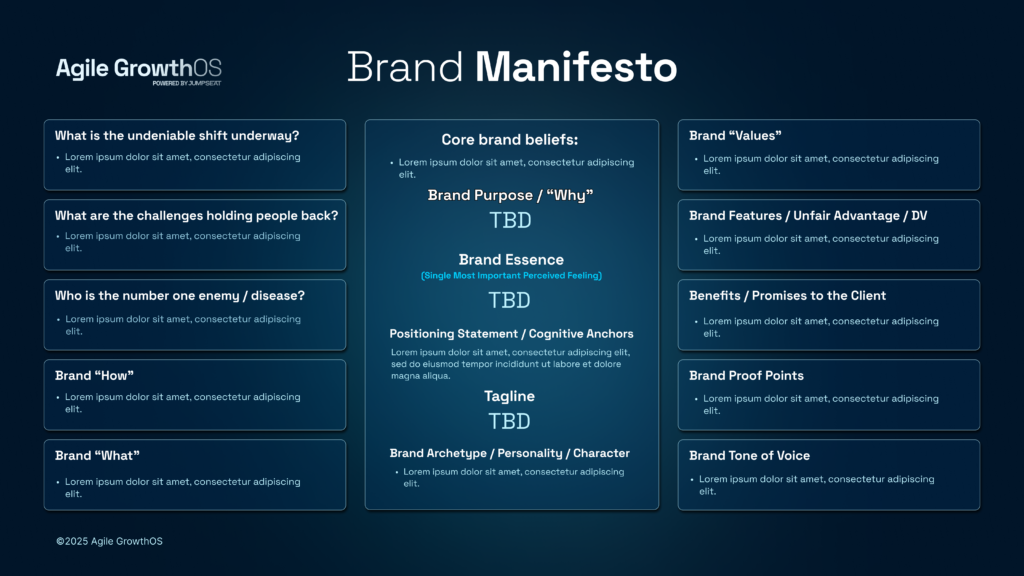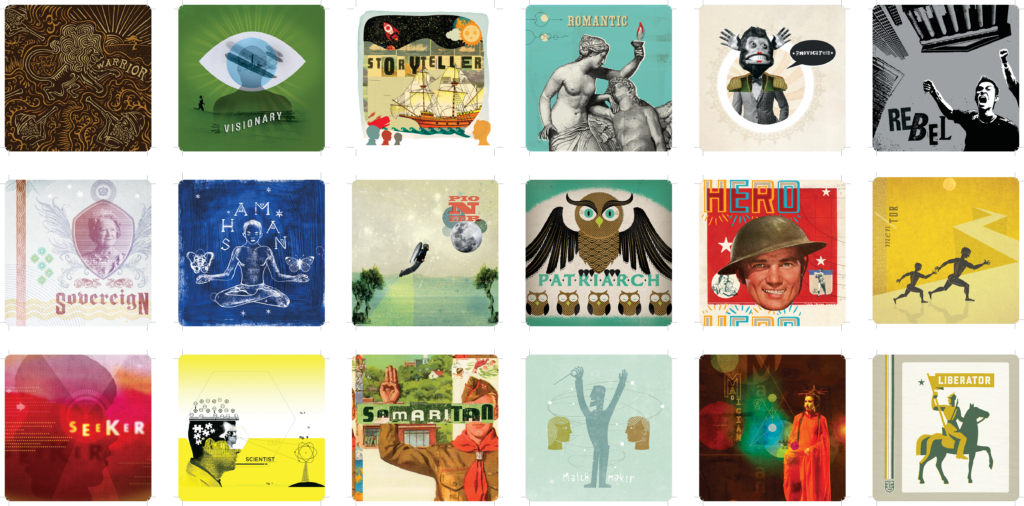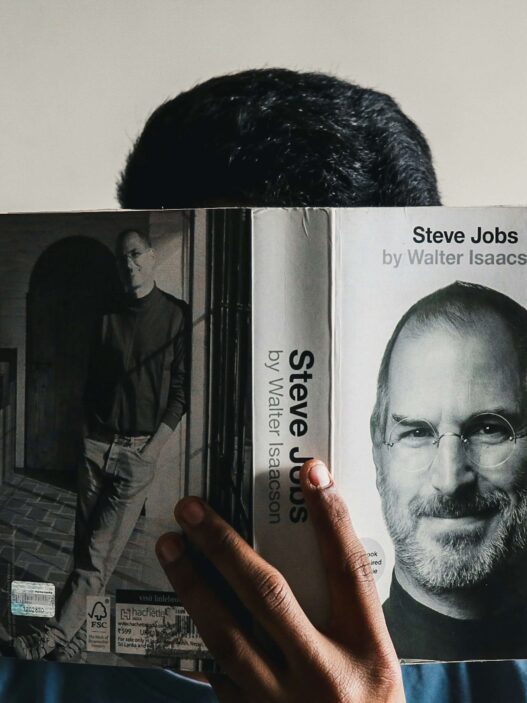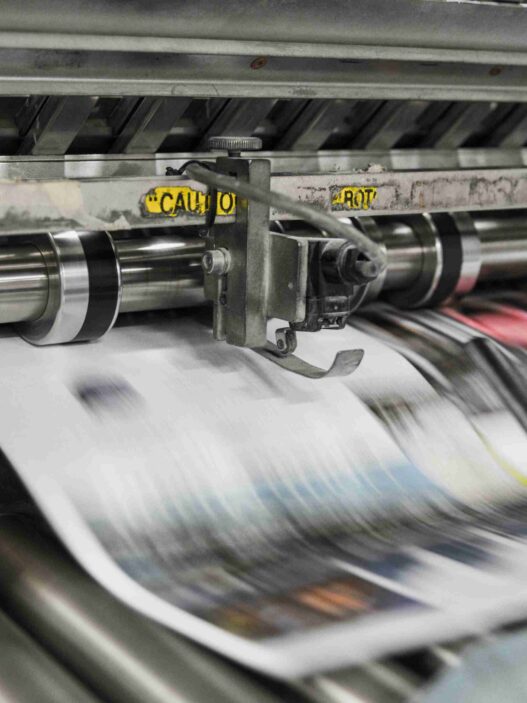Pick a B2B website.
Could be a competitor.
Could be a partner.
Could be your own.
Go to that site now.
Fast! Don’t overthink it. What’s your first impression?
- Does it feel alive—or just another generic B2B brand?
- Does it have a voice, a personality, a perspective—or could it belong to literally any company?
Do you immediately get why they exist and how they’re different—or is it just another sea of buzzwords?
And most importantly—how did it make you feel?
Yes, feel.
B2B marketing isn’t just about logic—it’s about connection. If a brand makes you feel nothing, it’s failing.
Be honest.
If it feels soulless, you’re not alone. Most B2B brands have the same problem.
Now, let’s talk about why—and how to fix it.
The Nuroscience Behind Why This Matters
We are emotional beings who make decisions for rational reasons.
I repeat: We are emotional beings.
I love when I talk to a CEO—someone who wears North Face, drives a Mercedes, flexes their United status, and sports vintage Air Jordans on stage with a blazer—and then tells me:
“Emotions don’t matter in B2B.”
Why?
Is there some magic wall between B2B and B2C?
Or—more likely—is it because they hope emotions don’t matter…
Because getting this right is really hard.
But here’s the neuroscience behind it:
1. Your brain processes emotions before logic.
Every piece of information you receive—what you see, hear, and read—first hits the limbic system, the part of the brain that controls emotions, memory, and decision-making.
Only after passing through the limbic system does information reach the prefrontal cortex, where rational thought happens.
2. Decisions are driven by emotion, justified by logic.
Neuroscientist Antonio Damasio’s research shows that people with damage to their emotional centers struggle to make decisions—even if their reasoning ability is fully intact.
Why? Because emotion assigns value to different options, helping us decide what actually matters.
3. B2B buyers are still human.
The idea that “B2B is all logic, no emotion” ignores how the brain works.
B2B buyers don’t just evaluate products; they evaluate risk, credibility, and personal impact.
Fear of making the wrong choice, excitement about a vision, trust in a brand—these all happen in the limbic system first.
If your brand, messaging, and outreach don’t create an emotional connection first, you’re making it harder for buyers to care, remember you, or take action.
B2B isn’t about removing emotion.
It’s about using emotion strategically—then backing it up with logic.
One more thing before we move forward:
This might be the most important concept in all of branding: If you don’t grasp this, nothing else matters:
Brands and ad campaigns make you feel something. If your brand doesn’t make someone feel something, then your brand is merely a commodity in the eyes of your buyer.
If you won’t take my word for it, take Maya’s –
“I’ve learned that people will forget what you said, people will forget what you did, but people will never forget how you made them feel.” – Maya Angelou
This Is Your One-Page Brand Manifesto Template
As part of the open-source AgileGrowthOS, it’s yours—steal it, use it, make your brand stronger.

There’s a lot in here, but we’re going to focus on three critical sections:
- Brand Purpose – Why do you exist beyond just making money?
- Brand Essence – What’s the single most important feeling your brand creates?
- Brand Archetype – What personality should your brand embody?
If you even directionally improve these three things, you’ll be well on your way to building a living, breathing, emotion-evoking, revenue-generating brand.
Discover Your Brand Why
Finding your brand purpose isn’t easy. It won’t happen overnight. It might even evolve over time. But if you don’t have one, never stop trying to define it.
Too many people mistake a brand for its logo or visual identity. That couldn’t be further from the truth. Your brand’s soul isn’t something you invent—it’s something you discover through conversations, experiences, and your company’s vision for the future.
And when you get it right? Everything else—your messaging, marketing, culture, and sales—becomes clearer.
Why Your Brand Purpose Matters
Your brand purpose is the reason your company exists beyond just making money. It’s your “why” statement. And the brands that get this right stand the test if time.
Examples:
- Patagonia (1973): “We’re in business to save our home planet.”
- Ben & Jerry’s (1978): “Ice cream can change the world.”
- Microsoft (1980s-2000s): “A computer on every desk and in every home.
- Apple: “Think Different.”
A clear and compelling ‘why’ impacts every stakeholder—your leadership team, employees, customers, and prospects. It guides decisions, unites teams, and gives people a reason to choose you over competitors.
How a Strong “Why” Creates a Competitive Edge
Your why isn’t just about inspiration—it’s a positioning weapon. The right brand purpose can instantly separate you from the competition.
Examples of effective “Why” statements:
- Nail Your Now – A pragmatic product development firm used this to position itself as the go-to for companies that need help today, not endless planning for tomorrow. It was a powerful counter to big consultancies that marketed themselves as “visionary innovators.”
- Every Decision Matters – A nonprofit in substance abuse prevention built its brand around this core belief: even the smallest decisions at the youngest age can change the trajectory of any life. It resonated deeply and became their guiding principle.
- Seek Surfboards, Not Sandcastles – A legendary “why” from Solstice, a digital innovation firm where JumpSeat founder Dan Ptak led marketing for three years before it merged into Kin + Carta. They embraced the idea of waves of change in technology, using a surfing analogy to make the message unique and memorable.
These statements didn’t just sound good—they changed how people saw these organizations.
Once you have clarity on your why, one of the best investments you can make is a great copywriter to bring it to life.
A strong brand purpose isn’t just words. It’s a north star that shapes perception, fuels momentum, and makes your brand impossible to ignore.
Exercise: Identify Your Brand Essence
We’ve talked a lot about feelings and emotions in this guide. Now, it’s time to lock in the one emotion you want to build your brand around.
Another way to think about Brand Essence is this:
What’s the single most important feeling you want your audience to associate with your brand—every time they interact with you?
Not just when they buy.
Not just when they read your content.
But always.
Why This Matters
If your brand doesn’t make people feel something, you’re just another option in a crowded market. And commodities don’t inspire loyalty, demand, or premium pricing.
People remember feelings before they remember facts.
If you can create an emotional connection, you’ll differentiate, build trust, and make your brand unforgettable.
A clear and compelling ‘why’ impacts every stakeholder—your leadership team, employees, customers, and prospects. It guides decisions, unites teams, and gives people a reason to choose you over competitors.
Two quick examples:
Disney → Magic
Disney doesn’t just sell movies, theme parks, or stuffed animals. They sell magic.
Think about it:
- Their MagicBands arrive weeks before your trip—because they know that the anticipation of feeling magic is just as powerful as the trip itself.
- Every experience, from their films to their parks, is designed to elicit wonder, nostalgia, and joy.
Harley-Davidson → Freedom
Harley-Davidson doesn’t just sell motorcycles. They sell freedom.
- They know they’re not just selling to long-haired, tattooed bikers.
- They’re also selling to 40-something lawyers who spend all week in a high-rise and crave a break from “real life” on the weekends.
That’s great branding. It’s not just about what the product does, but about who the customer becomes when they bu
Your Brand Essence = Your North Star
This is the feeling that will:
- Complement your “why”
- Shape your brand character and personality
- Guide everything from messaging to design to customer experience
Now, It’s Your Turn
In our guide, we have a list of 400+ emotions on pages 20 – 22 (shoutout to Kath Kyle for compiling it).
Don’t overthink it.
Which one(s) immediately jump out at you?
As others. See if there’s alignement.
If so, lean in. If not reconcile.
Defining Your Brand Archetype
Most B2B brands stop short when it comes to building a real identity.
They have a product, a website, and maybe even a mission statement. But they don’t have a clear archetype, a distinct tone of voice, or a brand personality that stands out.
This is why so many B2B brands feel interchangeable and forgettable.
Why Do So Many B2B Brands Miss this?
- The Curse of Referrals – Many firms grow through referrals and personal networks, so leaders assume they don’t need a strong brand.
- Fear of Standing Out – When most B2B brands play it safe, it takes a bold marketing leader to push for differentiation.
- Short-Term Thinking – Too many firms focus on lead gen and sales tactics instead of long-term brand building—not realizing that a strong brand makes demand generation easier.
The reality? Great branding isn’t a luxury—it’s a competitive advantage.
Why Brand Archetypes Matter
Your brand archetype is your core personality—a universally recognizable character that shapes how people perceive and connect with your brand.
This concept comes from Carl Jung (1919), who believed that humans naturally identify with archetypal patterns based on values, motivations, and behaviors.
When applied to branding, archetypes:
- Create emotional connections with customers.
- Make differentiation easier in crowded markets.
- Guide everything from tone of voice to brand messaging.
If you think archetypes don’t matter, look at brands that own their identities:
- Nike = The Hero → Inspires people to push limits.
- Harley-Davidson = The Outlaw → Sells rebellion and freedom.
- Apple = The Creator → Champions innovation and originality.
These brands don’t just sell products—they embody a personality.
Exercise: Identify Your Brand Arcehtype
Ask yourself:
- Which archetype feels most authentic to our firm?
- How do our best clients see us?
- Where is there whitespace in our category?

Your Company/Brand/Service/Tech Is Different—So Why Does Your Brand Sound Like Everyone Else?
If you actually have different technology, a unique approach, or a fundamentally better way to solve a problem—why does your brand still sound like every other player in the market?
That’s the trap in B2B. Even the most disruptive companies end up playing by the same tired marketing rules.
- You get lumped into a category you don’t really belong in.
- You use the same jargon because “that’s what buyers expect.”
You water down your message to sound “credible” instead of owning what makes you different.
How Rebels Cut Through the Noise
Let’s try this out for a second.
Take cybersecurity—an industry drowning in noise. Despite billions spent on marketing, most companies sound exactly the same.
- “AI-powered threat detection.”
- “Next-gen, best-in-class security.”
- “Enterprise-grade protection at scale.”
It all blurs together. And that’s the problem.
Now, imagine a Rebel cybersecurity brand that refuses to follow the script.
Instead of the usual fear-based messaging, they lead with something like this:
🚨 “The cybersecurity industry is growing 40% year over year. Not because it’s working—because it’s failing.”
That’s not just marketing—it’s a stance.
A Rebel brand doesn’t just sell a better security solution. It calls out the entire industry as broken.
- It names the problem no one else will.
- It challenges outdated thinking.
- It forces people to rethink what they assume is true.
That’s what real differentiation looks like.
Your Brand Archetype Shapes Everything- Own it or Drift into Irrelevance
Your brand archetype isn’t just a marketing exercise—it’s the foundation of everything.
Get this right, and suddenly, everything clicks into place:
- Your tone of voice stops sounding generic and starts feeling unmistakably you.
- Your brand identity isn’t just another set of colors and logos—it’s a living, breathing expression of what you stand for.
- Your messaging becomes magnetic—attracting the right customers while repelling the ones who don’t align.
- Your GTM strategy gains focus—because you know exactly how to position yourself against competitors, and how to make buyers feel something real.
A strong archetype aligns your marketing, sales, and company culture. It gives your team a common language, your customers a clear reason to care, and your market a brand they actually remember.
The best B2B brands aren’t just seen. They’re felt. And it all starts with defining who you are—and owning it.
B2B Brands Don’t Have to Be Boring—But It’s Up to You
Most B2B brands aren’t failing because they have bad products. They’re failing because they’re forgettable.
They blend in. They play it safe. They sound like everyone else.
But here’s the truth: Buyers don’t remember commodities. They remember brands that make them feel something.
A brand with a clear purpose, a strong identity, and a bold point of view is more than just a marketing asset—it’s a competitive weapon. It informs how you speak, how you position yourself, and how you go to market. It aligns your marketing, sales, and culture around something people actually care about.
And when you get this right?
- You attract the right customers—and repel the wrong ones.
- You stop competing on features and start competing on emotion.
- You build a brand that’s impossible to ignore.
So, is your brand just another B2B website lost in the sea of sameness?
Or is it something people actually connect with, trust, and remember?






